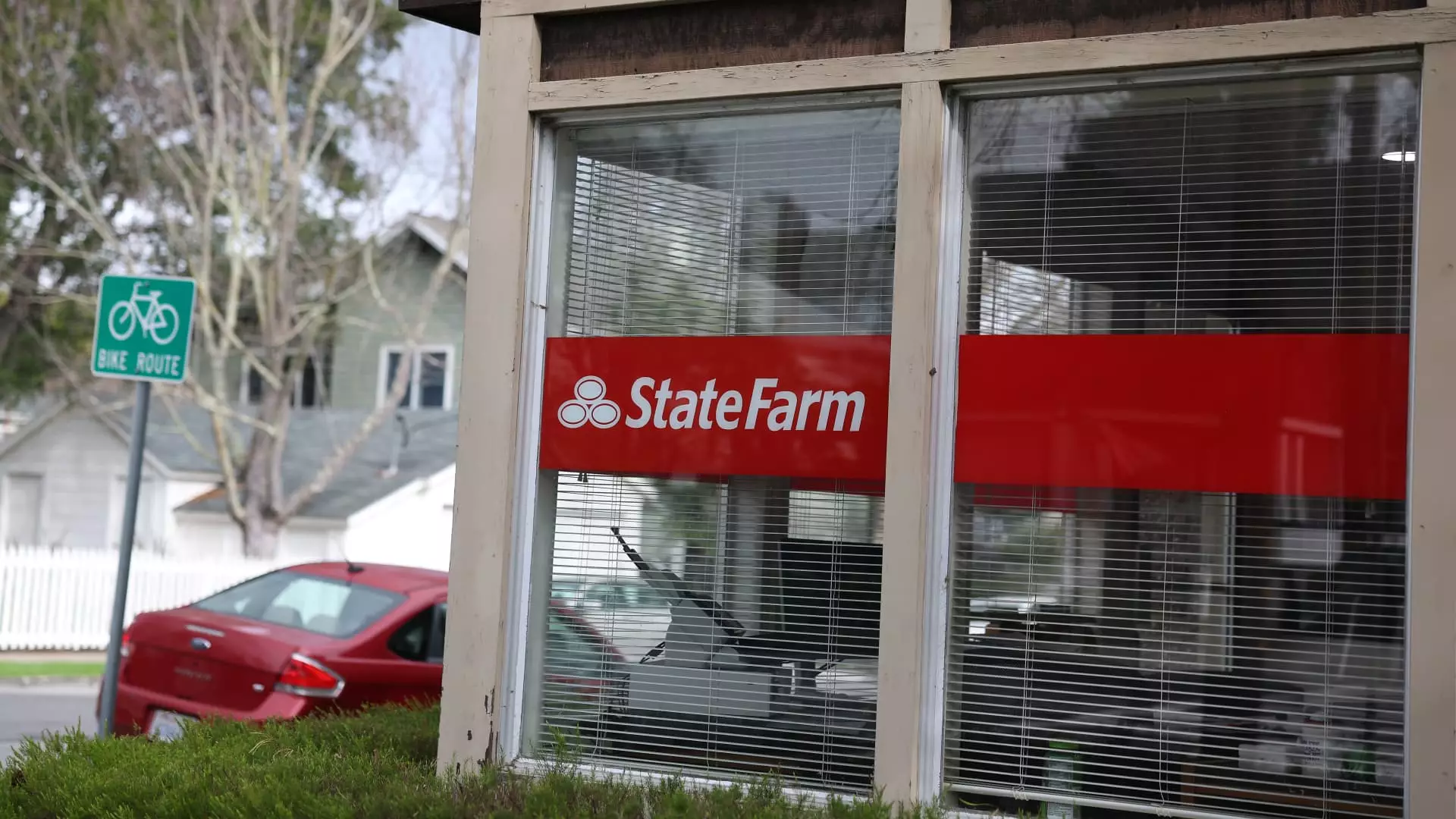State Farm’s plea for a significant hike in homeowner’s insurance rates is not just a financial maneuver; it represents a critical moment for the California insurance landscape. With the backdrop of devastating wildfires that have redefined financial ruin for many, State Farm General’s appeal for an emergency rate increase signals a desperate scramble for survival. They assert that to avert a calamitous downfall, they require an increase in premiums to re-stabilize their capital and navigate through an ocean of claims that are strangling their fiscal resources.
The insurance sector faces an urgent dilemma. How do you balance the need for sustainable profit against a backdrop of seemingly insurmountable losses? California’s insurance market has become a precarious tightrope, where companies like State Farm—holding around 20% of the market with nearly three million homeowner policies—are feeling the fervent heat of financial pressure. As it stands, the repercussions from the wildfires that swept through Los Angeles have burdened State Farm with payouts exceeding $2.75 billion, while total damages are estimated to reach beyond $250 billion. This situation paints a stark image: the company’s financial health seems precariously tied to the whims of natural disasters, which, in an era of climate change, are only expected to worsen.
The Reaction of the Insurance Community
During the contested hearings, California Department of Insurance representatives have made a striking comparison, likening State Farm’s perilous state to that of the Titanic—an iceberg is visible, but action is desperately needed to avert disaster. This allegory raises a haunting question: while state officials and advocates weigh the merits of raising rates, whose fate hangs in the balance? The fear of millions of Californians facing a potential insurance void looms large. The crux of the issue lies in the existing regulatory framework. California has maintained a complex relationship with insurance rate approvals, resistant to allowing significant increases despite the clear call for reform. Insurers have been compelled to adapt to an ever-evolving disaster landscape, leading to a dramatic reduction in the types of policies they are willing to underwrite.
Moreover, with State Farm ceasing new homeowner policies in May 2023 and opting not to renew 72,000 existing policies, the fragility of California’s insurance environment becomes glaringly evident. The insurer’s insistence on raising rates is no longer a mere business strategy; it’s a grasp for stability amidst an environment that has proven increasingly hostile to insurance viability.
The Challenge of a Sustainable Insurance Strategy
In response to the turmoil in the market, California has introduced a “Sustainable Insurance Strategy,” aiming to enable insurers to utilize catastrophe modeling that considers the risk factors involved. This initiative is crucial, as it attempts to address the systemic flaws that have raised alarm bells throughout the insurance community. The argument for State Farm’s requested rate increase hinges on whether this strategic framework can actually rectify the market’s evident inefficiencies.
Economists like David Appel, who testified during the hearings, advocate for the necessity of such increases, arguing they could forge a path toward financial stability not just for State Farm, but for the broader insurance market in California. If properly implemented, this approach may safeguard against future escalation of the crisis. However, skepticism remains palpable. Advocacy groups like Consumer Watchdog contend that State Farm is yet to substantiate its request effectively, raising ethical concerns about the potential consequences for policyholders.
The Transparent Cost of Insurance Rate Hikes
The irony of this situation is bleak: minorities and those living on lower incomes are often the most affected by rising insurance costs. Insurance is meant to provide security and peace of mind, yet as rates ascend ever upwards, it risks being transformed into an unattainable luxury for many. The implications of these decisions extend far beyond the boardroom; they ripple through entire communities steeped in fear of losing their homes.
Much like the tragedy of the Titanic, this could lead to a reckoning where, despite all the warnings, the ship is still fast approaching its fateful encounter. If premiums become unaffordable, Californians may be left adrift—without the lifeboats that insurances are supposed to provide. Simply put, the stakes are too high to dismiss the need for a thorough, thought-out approach to financial sustainability in the insurance sector that doesn’t leave vulnerable communities to face the harsh realities of natural disasters without adequate support.
It’s time for a critical reflection. Rather than relying on reactive measures, the insurance industry must proactively adapt and evolve, creating a more responsible and resilient structure that prioritizes not just profits, but lives. The insurance company must clearly assess and communicate the true value of their rate requests and provide assurances that they are not just passing on their costs to the people but are genuinely interested in creating a supportive environment within the communities they serve.



Leave a Reply